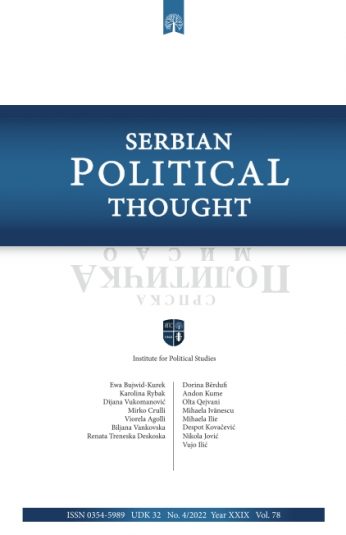Main topic
spt2/2014
The Budget Dilemma and Public Spending: Evidence from Ten Postcommunist Countries
Abstract
The paper examines whether the number of parties in the cabinet and the type of coalition affect the level of public spending. It offers a statistical analysis of two hypotheses: (1) the larger the number of parties in the cabinet, the higher the public spending; (2) minority and minimal winning coalitions tend to spend more, whereas large majority coalitions tend to spend less. The analysis draws on statistical data from ten East-Central European countries, with the data confirming the first and rejecting the second hypothesis. The paper offers two novelties. First, it defines a new concept (the Budget Dilemma) to test the relationship between the number of parties and the level of public spending. Second, it uses data about the countries that has appeared less frequently in similar types of research and studies, providing new observations for testing the relationship between the number of the parties in a cabinet and the level of public spending.
References
- Alesina, A., Tabellini G. (1990) “A positive theory of fiscal deficits and government debt”. Review of Economic Studies 57(3): 403-414.
- Demeulenaere, P. (2011) Analytical Sociology and Social Mechanisms. Cambridge: Cambridge University Press.
- Elgie, R. (2011) Semi-Presidentialism: Sub-Types and Democratic Performance. Oxford: Oxford University Press.
- Elgie, R., Moestrup S., Wu, Y. 2011. Semi-Presidentialism and Democracy. Basingstoke, Houndmills: Palgrave MacMillan.
- Elgie, R., Moestrup S. (2009) Semi-Presidentialism in Central and Eastern Europe. Manchester: Manchester University Press.
- Elster, J. (2007) Explaining Social Behavior. More Nuts and Bolts for Social Sciences. Cambridge: Cambridge University Press.
- Hardin, G. (1968) “The Tragedy of the Commons”. Science 162(3859): 1243-1248.
- Hibbs, D. A. Jr. (1986) “Political Parties and Macroeconomic Policies and Outcomes in the United States”. The American Economic Review, 76(2): 66 – 70.
- Müller-Rommel, F., Fettelschoss, K., Harfst, P. (2004) “Party government in Central Eastern European democracies: A data collection (1990–2003)”. European Journal of Political Research, 43(6) 869–894.
- Nordhaus, W. D. (1975) “The Political Business Cycle”. The Review of Economic Studies: 42 (2): 169-190.
- Pavlović, D. (2011) Ekomomski efekti polupredsedničkog režima [Economic Effects of Semipresidential Regime]. In: Mijatović, B. [Ed.] Institucionalne reforme u 2010. [Institutional Reforms in 2010] Centar za liberalno demokratske studije, Beograd. pp. 63-74.
- Pettersson-Lindbom, P. (2001) “An Empirical Investigation of the Strategic Use of Debt”. Journal of Political Economy 109(3): 570-583.
- Persson, T., Tabellini, G. (2003) The Economic Effect of Constitutions. The MIT Press, Cambridge.
- Tsebelis, G. (1995) “Decision Making in Political Systems: Veto Players in Presidentialism, Parliamentarism, Multilateralism, and Multipartyism”. British Journal of Political Science 25: 289-326.
- Tsebelis, G. (1999) “Veto Players and Law Production in Parliamentary Democracies: An Empirical Analysis”. American Political Science Review 93: 591-608
- Tsebelis, G. (2002) Veto Players: How Political Institutions Work. Princeton: Princeton University Press.
- Riker, W. (1962) A Theory of Political Coalition. New Heaven: Yale University Press.
- Schleiter, P., Morgan-Jones, E. (2010) “Who’s in Charge? Presidents Assemblies, and the Political Control of Semipresidential Cabinets”. Comparative Political Studies, 43 (11), 1415–1441.
- Swedberg, R., Hedström P. (eds.) (1998) Social Mechanisms: An Analytical Approach to Social Theory. Cambridge University Press: Cambridge.
Statistical Databases
- Parliament and Government Composition Database: http://parlgov.org/stable/index.html (Accessed December 30, 2012).
- Parties and Elections in Europe: http://www.parties-and-elections.eu/countries.html (Accessed December 30, 2012).

